Impacts
The impact of Aurania’s early-stage exploration on the people and the environment in the direct area of interest (DAI) of the Project is minimal. Our biggest physical impact on the environment is the cutting of heliports and drill platforms, and our drill camps are designed to minimize their footprint. Drill platforms have a maximum size of 6 metres (18 feet) square. Fauna and flora counts are done before these areas are cut and these areas are rehabilitated with the help of the local people as described in Drill Site Restoration. No chemicals are used in our basic exploration and rock sampling, while lubricants used to lessen the friction in the drill hole are biodegradable.
We strive to reduce our environmental impact further by restricting our greenhouse gas emissions from generators that supply electricity for the drill camps, motors used to pump water to the drill sites and the motors that drive the drills, by not only minimizing the running time of these motors, but by using the smallest motors to meet our needs. Aurania is evaluating the use of solar panels where practical to minimize generator use in the drill camps.
One of the biggest impacts of successful exploration – the discovery of an economic deposit – is enshrined by the Ecuadorian constitution: a guarantee that 60% of royalties paid to the State are to be given to the communities within the area of influence of an operating mine. For example, at Lundin Gold’s, Fruta del Norte mine in Ecuador, which is now in production, this income would be transformational for the local communities that have always had minimal resources. As this income becomes more well-known from well-regulated and responsible mining operations, communities’ attitudes are likely be far more favourable towards responsible mining.
Risks
Undoubtedly, the mining industry’s biggest risk is the failure of a tailings facility like the failures that have happened in Brazil in the last couple of years. A similar failure in the fragile ecosystem of Ecuador would have serious ramifications for the whole exploration and mining sector. Although Aurania is still early in the exploration cycle, we’re already thinking about safe tailings storage involving dry-stacking. The second key risk is social perception: Ecuador unfortunately has had a couple of examples of uncontrolled, informal mining at Nambija and, more recently, the Buenos Aires area in the northern part of the country. With modern, responsible mining being new to Ecuador (the two large-scale, modern mines only went into production in the latter part of 2019), the public’s general perception is based largely on the horrific images and contamination associated with chaotic gang-related and money-laundering “operations”.
Opportunities
The opportunity is to gradually change the negative image of mining in Ecuador using the outstanding example being set by the Fruta del Norte Mine, which is being managed to the highest environmental standards and exemplary inclusion of embryonic and small, local business. On a more local scale, there is abundant opportunity to work with isolated communities that have been largely abandoned for decades. There is a common perception that the jungle is an idyllic environment, but the reality is one of desperate social need, starting with the hunter-gatherer way of life being unsustainable in most communities. Infant malnutrition is a fundamental issue, along with endemic intestinal problems due to parasites, and from there, the list goes on: poor access to clean, potable water, education, basic health facilities, markets for produce, and communication. Basic ablution facilities are scarce, resulting in ubiquitous water contamination. There is no waste management system, so the environment is being contaminated from within. This list represents a daunting challenge, but the flipside is an amazing array of opportunities to make a lasting, sustainable impact on people’s lives by combining the deep knowledge of the Indigenous people with modern management techniques and concepts, to empower the people to achieve broad-based improvement from within.






